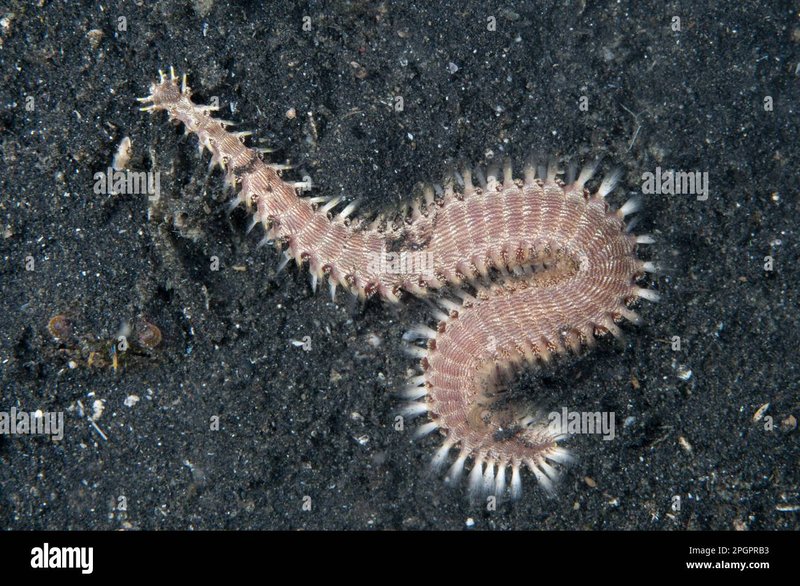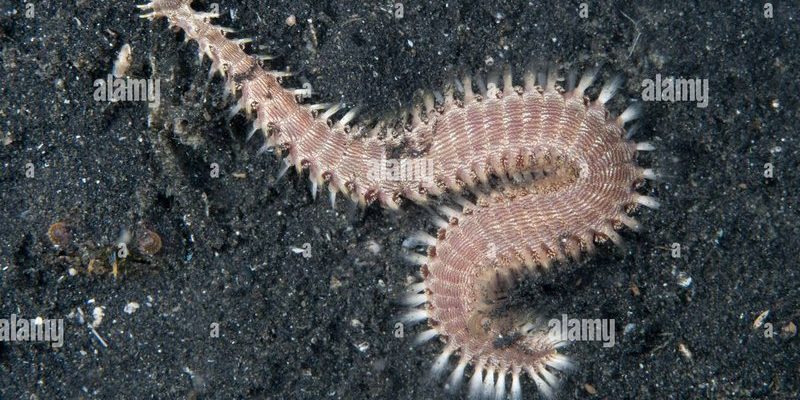
Now, picture this: you’re watching a vibrant coral reef, teeming with life. Fish dart around, but there’s something off. You notice fewer bristle worms squirming about in the sand. This isn’t just a trivial observation; it’s a flicker of a larger problem. The health of marine environments is linked to many factors, and bristle worms, along with many other marine organisms, play critical roles in maintaining balanced ecosystems. So, when their numbers drop, it’s a red flag. Let’s explore what went wrong.
Understanding Bristle Worms: The Basics
Bristle worms, belonging to the phylum Annelida, are segmented worms that come in many shapes and sizes. They often have a bristly texture, thanks to the tiny hair-like structures called *setae* that cover their bodies. These creatures thrive in various marine environments, from coral reefs to muddy seabeds. They’re often found at the bottom of the food chain, eating detritus and algae, which makes them essential for nutrient cycling.
Now, you might be wondering, why are these worms so important? Well, their feeding habits help break down organic material, recycling nutrients back into the ecosystem. Think of them as miniature composters. If bristle worm populations decline, it can disrupt the entire dynamics of their habitats, affecting everything from fish populations to coral health.
Signs of a Population Crash
When bristle worm populations crash, it often shows through several telltale signs. One of the first indicators is a noticeable decrease in activity. If you’re diving or snorkeling, and you see fewer worms, it could hint at underlying issues. You might also notice poor water quality or shifts in the types of marine life present.
Additionally, bristle worm’s absence could lead to an overgrowth of algae. Remember that these worms help keep algae levels in check. So, if you spot dense mats of green or brown sliminess spreading, it might mean the bristle worms are missing in action. With their role diminished, the delicate balance of the ecosystem skews, causing what environmentalists call a “trophic cascade.”
In a nutshell, when these signs appear, it’s like nature’s way of waving a red flag. It’s crucial to pay attention because it often indicates that something bigger is going on beneath the surface.
Causes of Population Decline
So, what causes these crashes in bristle worm populations? Honestly, it can be a mix of factors, all interlinked in a web of ecological dynamics. Here are a few of the main culprits:
- Pollution: Chemicals from agricultural runoff or industrial waste can seep into the ocean. These pollutants can disrupt the delicate balance of marine environments, often harming bristle worms directly.
- Climate Change: Rising ocean temperatures and acidification can stress marine life. Bristle worms may struggle to survive if temperatures exceed their tolerance levels.
- Overfishing: When larger species are overfished, it can lead to imbalances in the ecosystem. For instance, with fewer predators around, algae might explode, overshadowing the bristle worms’ habitat.
- Habitat Destruction: Coral reefs and seagrass beds are vital habitats for bristle worms. Human activities like coastal development or dredging can destroy these environments.
Each of these factors can lead to a ripple effect throughout the ecosystem, making it critical to address them promptly.
Impact on Marine Ecosystems
When bristle worm populations crash, the effects can echo throughout the marine environment. As these worms play a crucial role in recycling nutrients, a decline can lead to nutrient depletion in the surrounding ecosystem. This loss affects the growth of various marine plants and, ultimately, the fish and other wildlife that depend on them.
For example, if bristle worms disappear, you might find that certain fish species struggle to find food. This imbalance can lead to fewer fish in the area, affecting those who rely on fishing for their livelihood. It’s a cycle that can spiral out of control, affecting entire communities dependent on marine resources.
Furthermore, the absence of bristle worms can lead to increased sediment buildup in certain areas. This sediment can smother coral reefs, limiting light and ultimately harming coral health. When corals are stressed, they can bleach and die, creating a cascade of further issues within the ecosystem.
Restoration Efforts: What Can We Do?
Addressing the decline of bristle worm populations requires action on multiple fronts. Restoration and conservation efforts can play a pivotal role in maintaining healthy marine ecosystems. Here’s how we can help:
- Reducing Pollution: Implementing stricter regulations on the discharge of harmful chemicals into our oceans can drastically improve water quality.
- Protecting Habitats: Establishing marine protected areas can safeguard the habitats crucial for bristle worms and other marine life.
- Promoting Sustainable Fishing: Encouraging sustainable fishing practices can help maintain the balance of marine ecosystems and protect species that interact with bristle worms.
- Raising Awareness: Educating communities about the importance of bristle worms can foster a sense of responsibility towards marine conservation.
Every little effort counts, and collectively, we can help restore the delicate balance of our oceans and ensure the survival of these tiny but mighty creatures.
The Future of Bristle Worms
It’s hard to predict the exact future of bristle worm populations, especially given the many environmental challenges we face. However, with ongoing research and conservation efforts, we can work towards a brighter future for these important creatures. Enhancing our understanding of their biology and habitats can lead to more effective protection strategies.
For example, scientists are studying how different species of bristle worms respond to environmental stressors. This research could help identify resilient populations that might adapt better to changing conditions. Such knowledge is key in informing conservation efforts and ensuring that bristle worms continue to play their vital roles in marine ecosystems.
It’s clear that the health of bristle worm populations reflects the health of the oceans as a whole. By prioritizing their conservation, we not only support these delicate creatures but also protect the broader marine environment.
Bristle worms may seem like tiny, insignificant creatures, but their presence is vital for maintaining healthy marine ecosystems. When their populations crash, it’s not just a loss for the worms—it signifies deeper issues within our oceans that need to be addressed. By understanding the causes, impacts, and potential restoration efforts, we can take meaningful steps to ensure that future generations can enjoy vibrant, thriving marine environments.
So next time you think about the health of the ocean, remember those hard-working bristle worms. They’re not just cleaning up the ocean floor; they’re crucial players in the intricate dance of life beneath the waves. Together, let’s work towards a healthier future for our oceans, one tiny worm at a time.

